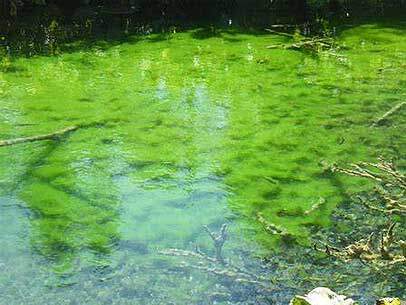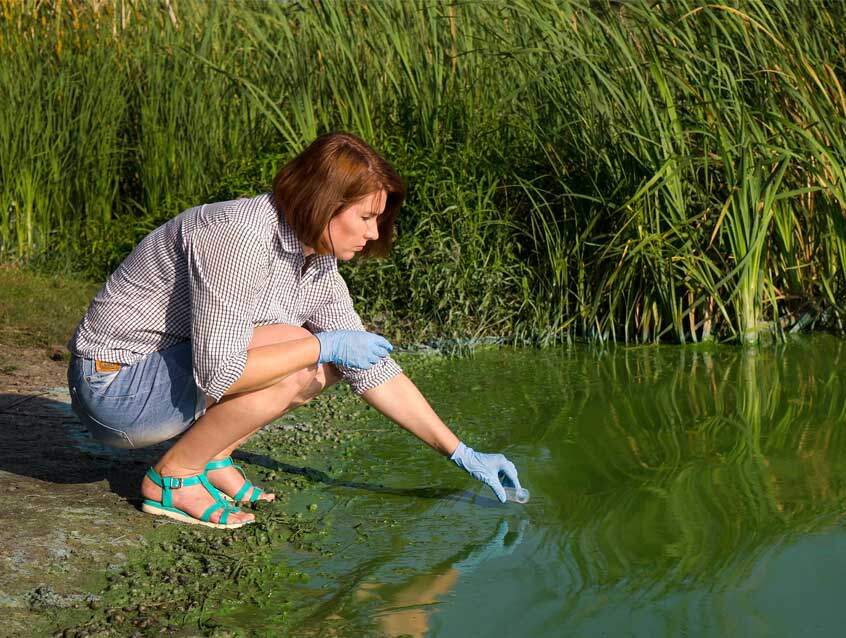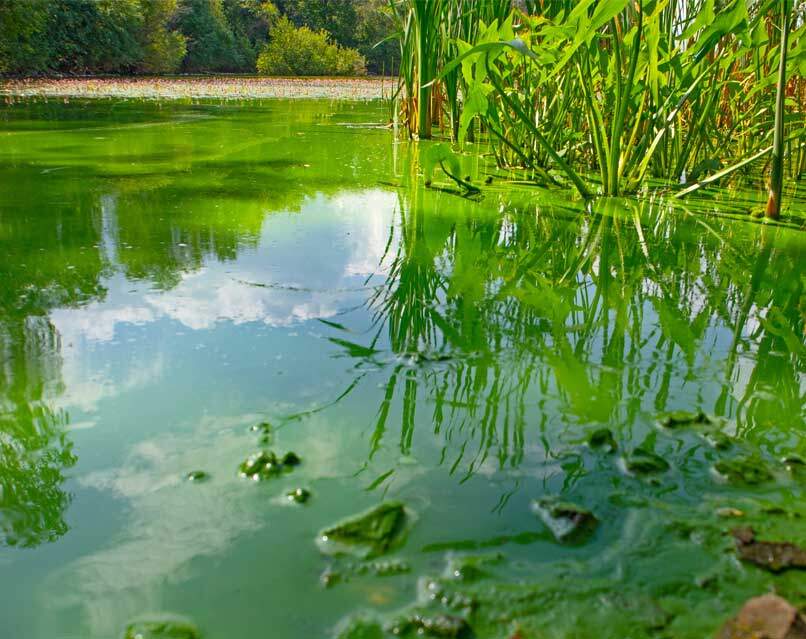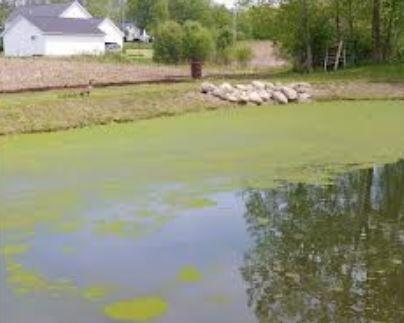If you have a pond near your home or business, you probably know the challenges of having a standing water feature and the aesthetic benefits that come with it. Cyanobacteria bloom is a problem that can arise mainly during hot summer months but can happen almost any time. These harmful algal can cause a host of problems for aquatic life in your pond and humans that come into contact with it.
 What Causes Cyanobacteria Blooms to Form?
What Causes Cyanobacteria Blooms to Form?
Harmful algal blooms (HABs) can occur when the water temperatures increase in areas with high nutrient levels. This drives photosynthetic organisms to grow exponentially and create noticeable blooms. These blooms are often unsightly but don’t hamper their use for recreation. There are times when they are dominated by organisms that can produce toxins which are harmful to human and animal health. This is when bodies of water needed to be avoided until the problem is resolved.
There are several factors that contribute to the development of cyanobacteria blooms. Any ecosystem has living organisms that need nutrients in order to survive. When a pond is in close proximity to agricultural soil or ordinary lawns that are given large amounts of phosphorus or nitrogen as fertilizer. This can help the growth of cyanobacteria. Light conditions can be another element that helps cyanobacteria to develop. Ponds with high amounts of algae that are exposed to intermittent amounts of high-intensity light, blue-green algae flourishes. When there is a dramatic increase in the cyanobacteria population that is when blooms can develop. Cyanobacteria blooms often turn the water bright blue-green (hence the name blue-green algae) and can form a surface scum or mat that to some looks like spilled paint on the water surface. Cyanobacteria blooms are important to monitor because many species of them have the ability to produce toxins. Cyanotoxins are produced and also contained in the cyanobacterial cells. If you see water that looks like pea soup, or any discolored water with a layer of scum on the surface swimming should be avoided for humans and pets.
Cyanobacteria Blooms and What They Are
Over the last decade, cyanobacteria blooms have been on the rise. They are showing up sooner and staying around longer. Over the last few years over 35 states have reported cyanobacteria blooms. One misconception is that cyanobacteria blooms are a form of algae. In fact, they are single-cell, microscopic, photosynthetic, aquatic organisms. While they have much of the same color of algae that is seen in ponds and lakes, they are different. There are ways in small ponds to rid them of this bacteria Treatment Products for Cyanobacteria Blue-Green Algae Blooms can be used. For a long-term solution for our communities to follow is to implement best management practices (BMPs) in our towns and cities in order to reduce nutrients from getting into these bodies of water.
Some The Most Commonly Found Cyanotoxins in the U.S. are:
- Microcystins – This are the most widespread cyanobacterial toxins. Microcystins can affect the liver but can also affect the kidney and reproductive system.
- Cylindrospermopsin – The primary toxic effects of this toxin can cause damage to the liver and kidney.
- Anatoxins – This toxin is also known as Very Fast Death Factor (VFDF) because of how sever its symptoms can be. The symptoms associated with anatoxins include loss of coordination, muscular fasciculations, convulsions and death by respiratory paralysis.
- Saxitoxins – are representative of a large toxin family referred to as the Paralytic Shellfish Poisoning toxins. When toxigenic marine dinoflagellates are consumed by shellfish, toxins concentrate and are delivered to consumers of the shellfish.
Cyanobacteria Bloom Testing
Cyanobacteria Bloom as you can see can be a real health threat and the fact it continues to thrive and produce at a higher rate we need to take action to minimize their effect on the environment and humans. Having your pond’s water tested for cyanobacteria bloom is a way to know for sure if the algae present is giving off harmful toxins. The only way to know if your pond has cyanobacteria is to have a water sample tested in a lab. National Pond Services offers test kits for this. The water samples can be collected and then they are mailed to a lab for testing.





